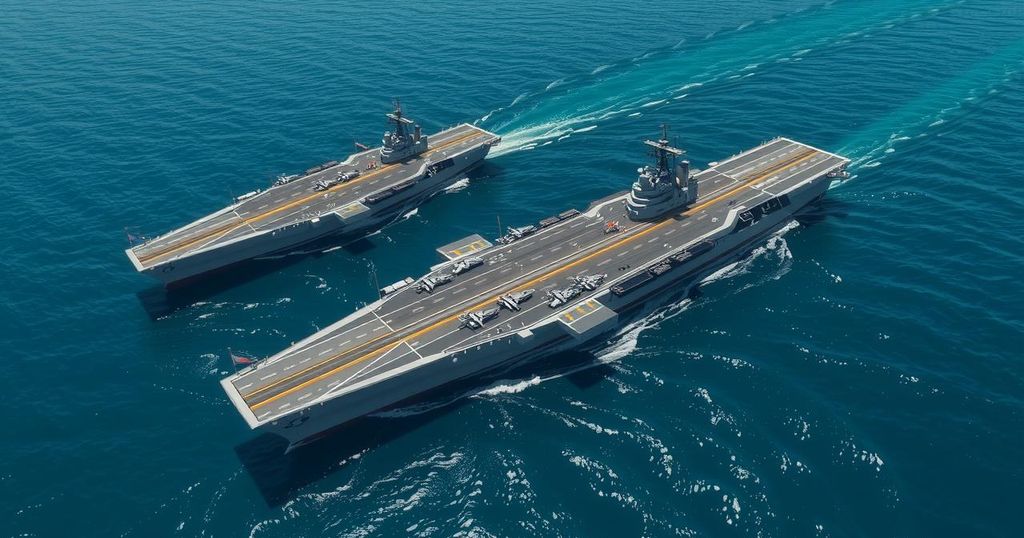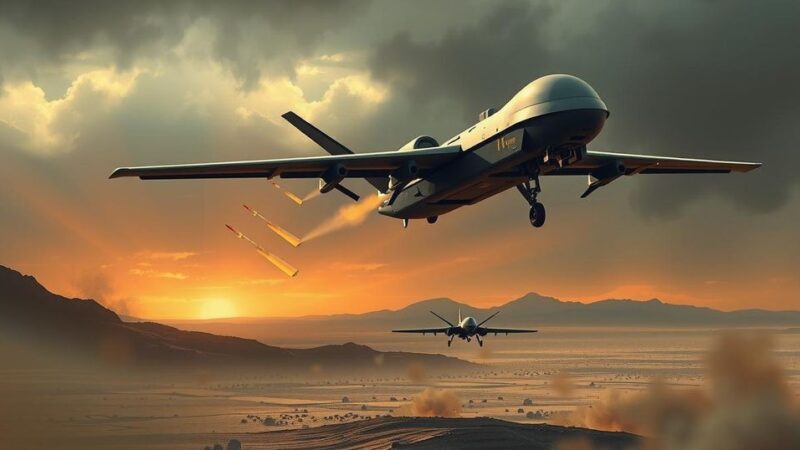Defense Secretary Pete Hegseth has extended the USS Harry S. Truman’s deployment in the Middle East to address threats from Yemen’s Houthis. Along with another carrier strike group, this extension is part of increased U.S. military operations against the group. Additionally, Hegseth has called for a new national defense strategy by the end of August to realign military priorities.
In a significant military move, Defense Secretary Pete Hegseth has ordered the USS Harry S. Truman aircraft carrier to extend its deployment in the Middle East. This decision aims to maintain two carrier strike groups in the region in response to the ongoing threat posed by Yemen’s Houthi terrorists. According to unnamed officials, this extension is crucial as the U.S. ramps up its operations against the Iran-backed Houthis, with the Truman remaining for an additional week.
Previously, in late March, Secretary Hegseth authorized the Truman’s presence, along with its accompanying warships, in the region for an entire month. On Thursday, he formalized the order to keep the carrier deployed once more, giving a nod to the strategic importance of this operation. After the week’s extension, the Truman and its associated vessels are expected to return to Norfolk, Virginia.
General Erik Kurilla, commander of U.S. Central Command, has advocated for this continued presence. Meanwhile, the USS Carl Vinson, based in San Diego, recently arrived in the Gulf of Aden and is actively engaged in operations there. The Truman is currently stationed alongside its strike group, which comprises two destroyers and a cruiser in the Red Sea.
Since mid-March, U.S. military actions against the Houthis have intensified, with a series of strikes launched daily. This surge in military engagement follows a presidential directive from last year, emphasizing the deployment of “overwhelming lethal force” until the Houthis cease their aggressive actions on commercial shipping routes in the Red Sea, a critical international trade artery.
Central Command has described its campaign against the Houthis as “intense and sustained.” Reports indicate U.S. forces have targeted more than 1,000 installations in Yemen since launching Operation Rough Rider. Should no further extensions be issued, sailors from the Truman could be expected back home sometime next month.
In the prior year, the Biden administration had similarly extended the USS Dwight D. Eisenhower’s deployment in the Red Sea, during a time of unprecedented naval engagements reminiscent of World War II. The Houthis have remained a constant threat, conducting missile and drone operations aimed at both commercial and military vessels, asserting that these measures are in retaliation against U.S. support for Israel amidst ongoing conflicts.
From late last year into early January, the Houthis reportedly targeted over 100 merchant vessels, resulting in the sinking of two and the loss of four sailors. This alarming trend has significantly disrupted trade flows through the Red Sea, which typically facilitates approximately $1 trillion in goods annually. A temporary ceasefire was observed by the Houthis prior to the renewed U.S. military offensive in March.
Additionally, on Friday, Hegseth instructed the Department of Defense to create a new national defense strategy, with a final draft expected by the end of August. This strategic document will outline priorities for addressing global security challenges and will reflect Hegseth’s vision for aligning military focus with Trump’s “America First” doctrine, as well as the implications of recent personnel cuts and structural realignments within military commands.
In summary, Defense Secretary Pete Hegseth has extended the deployment of the USS Harry S. Truman to reinforce U.S. military operations against Houthi terrorists in the Middle East. This move is part of a broader campaign, which has included significant airstrikes since March. The ongoing activities highlight the challenges posed by the Houthis to regional security, impacting crucial shipping lanes. Moreover, Hegseth’s call for a new national defense strategy underscores a shifting focus within the Pentagon regarding global security priorities.
Original Source: www.reviewjournal.com






